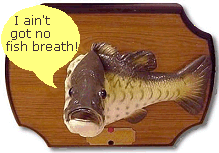![]()
Trimethylamine
(and 'fish breath' syndrome)
![]()
Simon Cotton
Uppingham School, Rutland, UK
![]()
Molecule of the Month August 2004
Also available: JSMol version.
![]()

|
Trimethylamine(and 'fish breath' syndrome)
Simon Cotton
Molecule of the Month August 2004
|
 |

James Ward (1769-1859) Miranda and Caliban. |
"What have we here? a man or a fish? dead or alive? A fish: he smells like a fish; a very ancient and fish-like smell; a kind of not of the newest Poor-John. A strange fish! Were I in England now, as once I was, and had but this fish painted, not a holiday fool there but would give a piece of silver: there would this monster make a man; any strange beast there makes a man: when they will not give a doit to relieve a lame beggar, they will lazy out ten to see a dead Indian. Legged like a man and his fins like arms! Warm o' my troth! I do now let loose my opinion; hold it no longer: this is no fish, but an islander, that hath lately suffered by a thunderbolt." William Shakespeare, The Tempest, Act 2.Scene 2. (Trinculo's monologue) |
Modern thinking inclines to the view that in describing Caliban, he was giving an early documented example of trimethylaminuria.
 Which is?
Which is?People having a fish odour.
No.
Trimethylamine (TMA), (CH3)3N
 |
 |
| Trimethylamine | ..and its spacefill representation. |
Fish contain a compound called trimethylamine N-oxide (TMAO). They are believed to use it to increase osmotic concentration and thus depress the freezing point of body fluids, an important detail in cold-water fish. It is also reckoned to counteract the perturbing effects of urea on proteins in enzyme systems.
The body contains enzymes called flavinmonoxygenases (FMOs) which are thought to break down environmental toxins in the body. One of these, FMO3, removes nitrogen compounds obtained from the diet. Mutated copies of FMO3 lose the ability to oxidise Me3N to Me3NO. One source of trimethylamine is the compound choline (Me3N+CH2CH2OH), which is found in eggs, liver, legumes and some grains; it is broken down by bacteria to form Me3N.

Choline
In turn, Me3N is normally oxidised in the liver to odourless TMAO, which is excreted from the body.
However, when the ability to oxidize trimethylamine is impaired, large amounts of the unchanged amine are excreted, producing of a highly unpleasant, fishy body odour which has led to the colloquial term "fish odour syndrome" to describe the condition.
 What is trimethylamine like (apart from the fishy smell)?
What is trimethylamine like (apart from the fishy smell)?It's a colourless liquid with a boiling point around 3.5°C, compared with the higher melting point of 224-226°C for the more polar Me3NO, which presumably has dipole-dipole intermolecular forces. Trimethylamine is a base, like ammonia. Also like ammonia, it has a trigonal pyramidal structure. The C-N-C bond angle is 110.9°, compared with 107.2° in NH3, presumably due to greater repulsions between the methyl groups. This angle is reduced to 109.0° in Me3NO.

TMA TMAO
Pharmacogenetic screening has indicated that the complaint is inherited as an autosomal recessive trait. Up to 1% of people are believed to contain a defective copy of the FMO3 gene, of which everyone has two copies, one inherited from each parent. The problem arises when both copies are defective. This means that possibly one person in 10,000 could suffer from fish-breath syndrome, making it about as common as PKU (Phenylketonuria), another genetic defect about which much more is known.
It is obviously a very unpleasant thing to live with. Sufferers get ostracised, children get called names at school. People start smoking to disguise the smell. At present, no cure is known. Taking antibiotics can help (metronidazole, neomycin and lactulose have been used) and trying to control the amount of protein (and hence choline) in the diet, by eating less fish, eggs and liver, may be a good idea, though ingesting too little choline may lead to liver problems. A compound called indole-3-carbinole, found in broccoli and other dark green vegetables, can block the enzyme FMO3, so avoiding broccoli may also help. Things are complicated by the fact that indole-3-carbinole is now believed to help prevent cervical cancer.
 Are humans the only sufferers?
Are humans the only sufferers?It seems that dogs sometimes smell of trimethylamine, whilst Swedish scientists have discovered the mutation in the FMO3 gene causing some Swedish cows to produce fish-smelling milk. The plant called Stinking Goosefoot (Chenopodium olidum), shown right, also produces trimethylamine.
![]()
![]()
![]() Back to Molecule of the Month page. [DOI:10.6084/m9.figshare.5245822]
Back to Molecule of the Month page. [DOI:10.6084/m9.figshare.5245822]